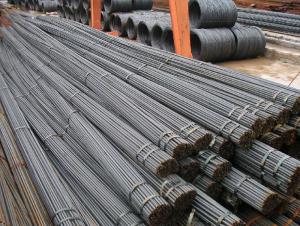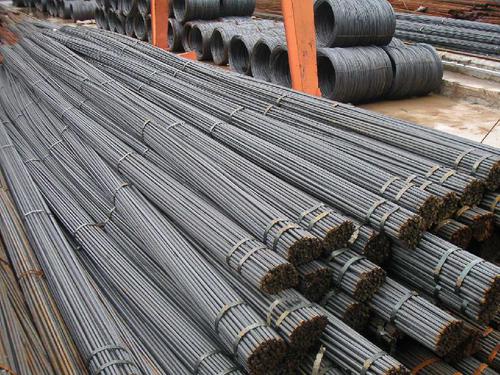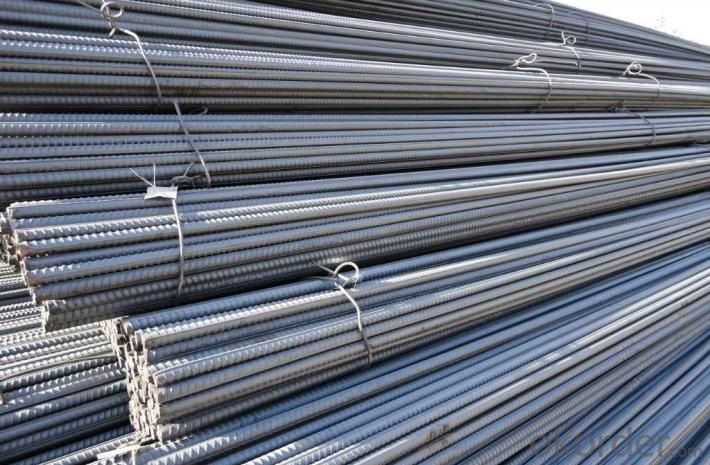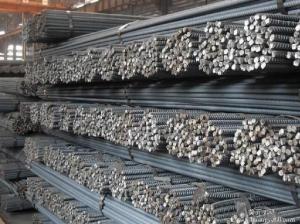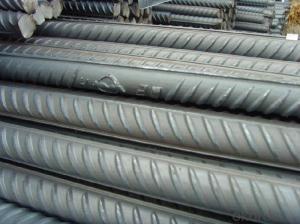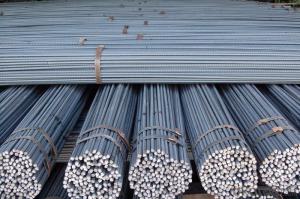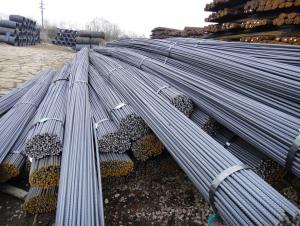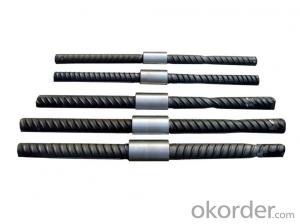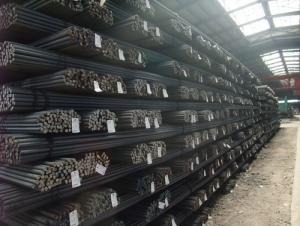Seven mm Cold Rolled Steel Rebars with Good Quality
- Loading Port:
- Tianjin
- Payment Terms:
- TT or LC
- Min Order Qty:
- 100 m.t.
- Supply Capability:
- 15000 m.t./month
OKorder Service Pledge
OKorder Financial Service
You Might Also Like
Specifications of Seven mm Cold Rolled Steel Rebars with Good Quality:
Name | Seven mm Cold Rolled Steel Rebars with Good Quality | |
Diameter | 5mm, 5.5mm, 6mm, 6.5mm, 7mm, 8mm, 9mm, 10mm, 11mm, 12mm, | |
Length | 6M, 9M, 12M or as required | |
Price | Keep lower operating costs so as to offer competitive price for our clients | |
Label | to be specified by customer, generally, each bundle has 1-2 labels | |
Application | Building, construction | |
Invoicing | Actual or Theoretical Weight Basis as buyer’s request. | |
Theoretical weight and section area of each diameter of Seven mm Cold Rolled Steel Rebars with Good Quality as below for your information:
Diameter(mm) | Section area (mm²) | Mass(kg/m) | Weight of 12m (kg) | Pcs/ton |
7 | 38.5 | 0.302 | 3.624 | 275.94 |
Packaging & Delivery of Seven mm Cold Rolled Steel Rebars with Good Quality:
Packaging Detail: products are packed in bundle and then shipped by container or bulk vessel, deformed bar is usually naked strapping delivery, when storing, please pay attention to moisture proof. The performance of rust will produce adverse effect.
Each bundle weight: 2-3MT, or as required
Payment terms: TT payment in advance or Irrevocable LC at sight.
Trade terms :FOB, CFR, CIF
Delivery Detail: within 45 days after received advanced payment or LC.
FAQ:
Q1: Why buy Materials & Equipment from OKorder.com?
A1: All products offered byOKorder.com are carefully selected from China's most reliable manufacturing enterprises. Through its ISO certifications, OKorder.com adheres to the highest standards and a commitment to supply chain safety and customer satisfaction.
Q2: How do we guarantee the quality of our products?
A2: We have established an advanced quality management system which conducts strict quality tests at every step, from raw materials to the final product. At the same time, we provide extensive follow-up service assurances as required.
Q3: How soon can we receive the product after purchase?
A3: Within three days of placing an order, we will arrange production. The shipping date is dependent upon the quatity, how many sizes you want and the plan of production, but is typically 1 month to 2 month days from the beginning of production.
Images of Seven mm Cold Rolled Steel Rebars with Good Quality:
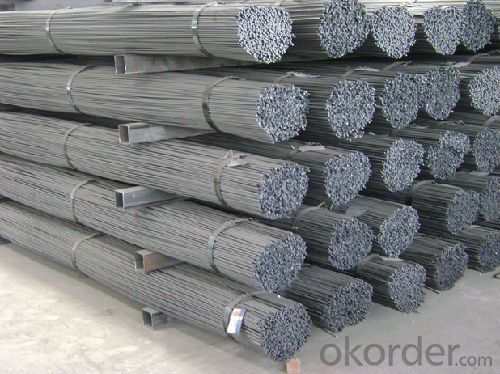

- Q: What are the guidelines for the proper spacing of steel rebars in slabs-on-grade?
- To ensure the structural integrity and longevity of the concrete slab, it is crucial to follow guidelines for spacing steel rebars in slabs-on-grade. Here are the general guidelines to be followed: 1. Concrete cover: The first consideration is the distance between the rebar surface and the concrete edge, known as the concrete cover. Local building codes or engineering standards typically specify the minimum cover requirements, which must be strictly adhered to. This cover protects the rebar from corrosion and provides fire resistance. 2. Rebar spacing: The spacing between rebars depends on the load requirements and slab dimensions. A closer spacing results in a stronger slab. However, it is necessary to maintain proper spacing to allow free flow of concrete around the rebar during pouring and ensure proper consolidation. Generally, the spacing should not exceed three times the slab thickness or 18 inches, whichever is smaller. 3. Rebar size and diameter: The selection of rebar size and diameter depends on the load requirements and design specifications. Larger loads require larger diameter rebars with increased spacing. Common rebar sizes for slabs-on-grade range from #3 (3/8 inch diameter) to #8 (1 inch diameter). 4. Rebar placement: Proper placement of rebars within the slab is critical. The rebars should be positioned at the center of the slab's thickness to ensure even load distribution. Moreover, they should be securely tied or supported to prevent displacement during concrete placement and consolidation. 5. Joint reinforcement: Construction joints are often included in slabs-on-grade to accommodate expansion and contraction. Proper reinforcement of these joints is essential for maintaining structural integrity. Joint reinforcement, such as dowel bars or tie bars, should be placed perpendicular to the joint and adequately anchored on both sides. It is important to note that these guidelines provide a general overview, and specific project requirements may vary. Consulting a structural engineer or following local building codes and industry standards is essential to ensure compliance and optimize the design of steel rebars in slabs-on-grade.
- Q: What is the effect of carbonation on steel rebars?
- The effect of carbonation on steel rebars is corrosion. Carbonation reduces the alkalinity of concrete, which leads to the breakdown of the passive layer on the steel surface. This allows moisture and oxygen to reach the steel, causing it to corrode and potentially weaken the structure over time.
- Q: How are steel rebars protected against alkali attacks?
- Various techniques and materials are used to protect steel rebars from alkali attacks. One commonly employed method involves the application of a protective coating onto the surface of the rebars. This coating acts as a barrier, preventing direct contact between the steel and the alkaline environment. Epoxy, zinc, and polyethylene are frequently utilized coatings that are designed to provide long-lasting protection against alkali attacks. Another approach to safeguarding rebars is the use of corrosion inhibitors. These inhibitors are added to the concrete mixture during construction and work by reducing the corrosive effects of alkali on the rebars. By forming a protective film on the steel surface, corrosion inhibitors prevent alkali from reaching the rebar and causing damage. In addition to coatings and corrosion inhibitors, the proper design of the concrete mix is also essential in protecting rebars from alkali attacks. By optimizing the composition of the concrete mix, engineers can decrease the alkalinity of the surrounding environment, thereby minimizing the risk of alkali attacks and subsequent corrosion. To ensure the continued protection of steel rebars against alkali attacks, regular maintenance and inspection of structures are crucial. It is essential to monitor the condition of the rebars and promptly address any signs of corrosion or damage, as this is vital to their long-term durability. In summary, the combination of protective coatings, corrosion inhibitors, proper concrete mix design, and regular maintenance are key factors in safeguarding steel rebars against alkali attacks. By implementing these measures, the lifespan and structural integrity of concrete structures can be significantly extended.
- Q: Are there any specific guidelines for storing steel rebars on-site?
- Yes, there are specific guidelines for storing steel rebars on-site. These guidelines typically include keeping the rebars off the ground using racks or pallets, ensuring proper alignment and support to prevent bending or warping, protecting them from moisture and corrosion by covering with waterproof material, and organizing them in a way that allows easy access and identification. It is also important to follow any manufacturer recommendations and local building codes for safe storage of steel rebars.
- Q: Are steel rebars subject to any international standards or regulations?
- Yes, steel rebars are subject to international standards and regulations. The most widely recognized standard for steel rebars is the ASTM A615/A615M-20, which provides specifications for deformed and plain carbon-steel bars for concrete reinforcement. Additionally, various countries and regions may have their own specific standards and regulations regarding the production, testing, and use of steel rebars to ensure their quality and performance in construction projects.
- Q: What is the tensile strength of steel rebars?
- The tensile strength of steel rebars typically ranges from 400 to 600 megapascals (MPa).
- Q: Are steel rebars easy to cut and shape?
- No, steel rebars are not easy to cut and shape as they are made of strong and durable steel material. They require specialized tools and expertise to cut and shape them accurately.
- Q: What are the safety precautions when handling steel rebars?
- When handling steel rebars, there are several safety precautions that should be followed to minimize the risk of accidents or injuries. These precautions include: 1. Personal Protective Equipment (PPE): It is essential to wear the appropriate PPE when handling steel rebars. This includes steel-toe boots, gloves, safety glasses, and a hard hat. PPE will protect against potential hazards such as falling rebars or flying debris. 2. Lifting and Carrying Techniques: Steel rebars can be heavy and difficult to handle. It is important to use proper lifting techniques to avoid strain or injury. Bend at the knees, not the waist, and use the leg muscles to lift the rebar. It is also crucial to avoid overexertion and ask for assistance when handling heavy rebars. 3. Proper Storage: Steel rebars should be stored in a secure and organized manner to prevent them from falling or rolling. Rebars should be stacked flat and not leaning against walls or other structures. Additionally, rebars should be stored away from high traffic areas to avoid accidental collisions. 4. Sharp Edges: Steel rebars have sharp edges that can cause cuts or puncture wounds. It is important to handle rebars with caution and wear gloves to protect the hands. Additionally, rebars should be stored and transported in a way that minimizes the risk of coming into contact with sharp edges. 5. Communication and Warning Signs: When working with steel rebars, it is important to communicate with coworkers and warn them of any potential hazards or activities involving rebars. Clear signage should be posted in work areas to alert others to the presence of rebars and the need for caution. 6. Training and Supervision: Workers should receive proper training on the safe handling and storage of steel rebars. Supervisors should closely monitor work areas to ensure that safety protocols are being followed and provide guidance or corrective action as needed. By following these safety precautions, the risk of accidents or injuries when handling steel rebars can be significantly reduced. It is important to prioritize safety at all times to create a secure working environment.
- Q: What are the common surface patterns for steel rebars?
- The common surface patterns for steel rebars include plain, deformed, and ribbed patterns. Plain rebars have a smooth surface without any patterns or indentations. They are commonly used in applications where the rebar needs to be easily bendable or welded, such as in reinforced concrete structures. Deformed rebars, on the other hand, have patterns or indentations on their surface. These patterns are typically in the form of ribs, humps, or indentations that provide enhanced bonding characteristics with the surrounding concrete. The deformations improve the grip between the rebar and concrete, ensuring better transfer of stresses and preventing slippage. Deformed rebars are widely used in construction projects, especially in areas where high tensile strength and bond strength are required. Ribbed rebars are a specific type of deformed rebar that have continuous longitudinal ribs along their length. These ribs are usually evenly spaced and provide additional anchorage and bond strength with the concrete. Ribbed rebars are commonly used in applications where a higher level of bond strength is required, such as in seismic zones or in structures subjected to heavy loads. Overall, the choice of surface pattern for steel rebars depends on the specific requirements of the construction project and the desired performance characteristics.
- Q: Are steel rebars compatible with other construction materials?
- Yes, steel rebars are compatible with other construction materials. They are commonly used in conjunction with concrete to enhance its strength and durability. Additionally, steel rebars can also be used with other materials like masonry and timber to provide structural support and reinforcement.
Send your message to us
Seven mm Cold Rolled Steel Rebars with Good Quality
- Loading Port:
- Tianjin
- Payment Terms:
- TT or LC
- Min Order Qty:
- 100 m.t.
- Supply Capability:
- 15000 m.t./month
OKorder Service Pledge
OKorder Financial Service
Similar products
Hot products
Hot Searches
Related keywords
